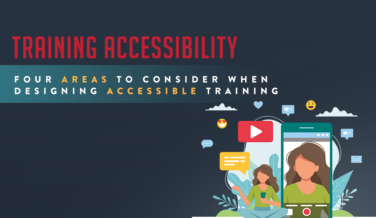6 Steps For Successful Corporate Training Video Production
Videos are some of the best training tools available in today’s corporate world. For one, they bring concepts to life and engage learners on an emotional level. Would you rather read a complex manual on how to fix a leaky faucet, or watch a five-minute YouTube video on the subject? It is often more convenient and cost-effective to produce training videos than it is to organize in-person training, especially if you’re dealing with audiences spread across multiple shifts, locations, or time zones. Plus, videos can be referenced again and again for years, providing you with a higher return on investment than other training methods.
So where to begin? Once you’ve decided that video is an appropriate learning solution or mode for your audience, how do you start the process of creating one? Below is your essential checklist for successful corporate training video production.
1. Identify Your Key Messages
What exactly do you want your audience to know by the end of this video? Document a concise and realistic list of key messages – the optimal length for a training video is only two to seven minutes; any longer and you risk losing your audience’s attention. Besides, the sooner your employees are trained, the sooner they can start being productive. You also don’t want to overwhelm your employees by cramming too much information into one short video. If you find yourself scrambling to fit in more and more messages, take a step back and consider splitting up your training into multiple sessions.
2. Know Your Audience
Viewers need to connect information that’s being presented in order to commit it to long-term memory. Therefore, it’s crucial to know your audience and use appropriate language when creating a training video so that you not only keep your audience engaged but avoid alienating anyone as well. Is your audience largely comprised of the over-50 set? Maybe don’t include too many memes or pop culture references. Are you a male manager training a group of female employees? Be sure to include gender-inclusive language in your script.
3. Choose A Style
There are many different styles of corporate training video, and once you’ve identified your messaging, you can start to think about what style will best communicate the training task at hand. Talking head videos help put a human face on your corporation and make viewers feel connected, while animations are highly effective at illustrating points and making multi-step processes digestible. You might try to mix and match a few different styles. Sometimes, a talking head might explain an animation process in a split screen.
4. Prepare And Rehearse Your Script
Whether you’re appearing on camera yourself, providing voice over, or hiring acting talent, you’ll need to write an engaging script for your training video. Script writing is a unique talent, so be sure that someone with script writing experience takes on this task. Sometimes Instructional Designers have this experience, but more often someone with a marketing/communications background will be more efficient.
But clear, concise writing is only half the battle – make sure you take time to rehearse the script. Even the most eloquent language can benefit from being read aloud, as your narration should sound natural. Take note of your tone and energy level; you’ll want to be upbeat and lively for some types of video, or perhaps more serious in another. Reading your script out loud is also a great way to catch grammatical errors and repetitive word choices that you might have otherwise skimmed over.

5. Gather The Necessary Equipment
You don’t have to treat the production of a corporate training video like it’s your Hollywood debut, but it is still important to meet a certain level of quality. After all, this video could be seen by hundreds or even thousands of employees, depending on the size of your organization, and might be reused and referred back to again and again for years – one of the advantages of video learning over instructor-led training.
You’ll want to invest in a decent camera, a good microphone, and professional editing software. Pay attention to key details like making sure your audio recording environment is free of excess background noise. You might not need a whole film crew, but it can be beneficial to recruit an extra set of eyes to at least assist during the editing phase.
6. Evaluate The Video’s Success
Once your training video is produced, edited, and on the screen in front of a room full of employees, it may seem like your work is done – and you’re not far off! But there’s just one last thing for you to do: make sure the video works.
If the video aims to teach a job-related task, evaluate employees’ performance repeating that task over time to see if the video successfully instructed them. If the video is more general or covers multiple aspects of the job, invite employees to participate in a survey where they can express how useful they found the video. Valuable feedback will help you maximize the productivity and success of future training videos.
Final Word
Producing a training video is a convenient way to disseminate information to large groups of people. It saves a great deal of time, money, and effort compared to live training sessions that have to be repeated annually or even multiple times a year. If you follow the above steps, you can produce a high-quality corporate training video that engages your employees and allows them to retain knowledge as thoroughly as possible.
*This post originally appeared on eLearningIndustry.com

Continue reading

Dashe joins ttcInnovations
Learn More
Embracing the Future: Early Adopters of Generative AI for Learning
Learn More
Four Areas To Consider When Designing Accessible Training
Learn MoreCommitted to
finding solutions
